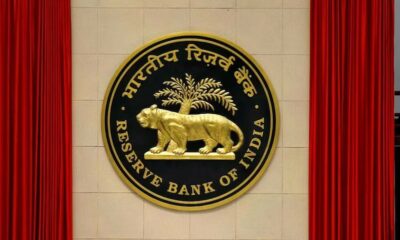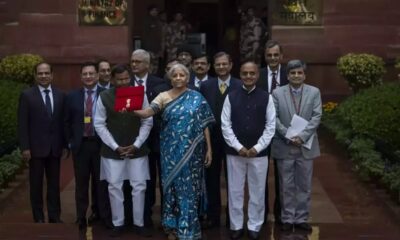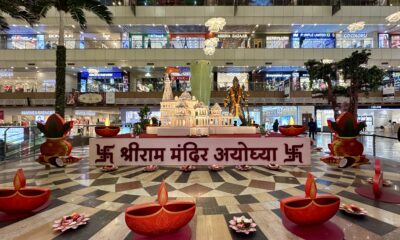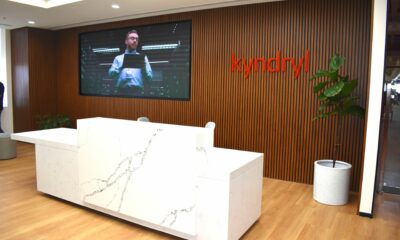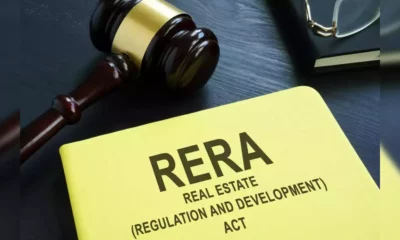Main
METRO DELIGHT
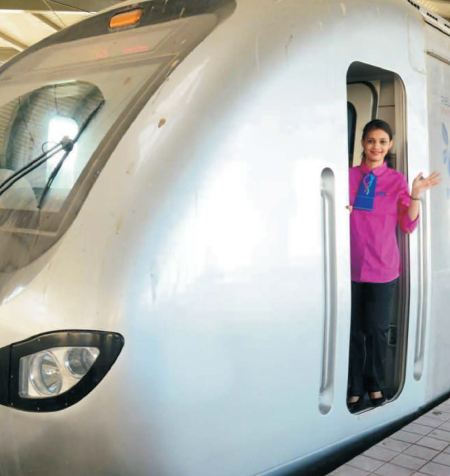



The first comprehensive example was when Connaught Place, virtually withering and a dormant commercial centre in the heart of the national capital, witnessed sudden rescinding of fortunes when the first Metro train arrived.
And that is precisely why the signing of a Memorandum of Understanding (MoU) between the Ghaziabad Development Authority (GDA) and Delhi Metro for the 9.41 km-long extension of the Metro line from Dilshad Garden to New Bus Stand in Ghaziabad, UP, has spread cheer in the realty market.
Independent analyses of pricing accessed by Realty & More show that proximity to a Metro station can alone account for a 22 per cent variation in land values, the other factors being location, distance of the land from the central point and income groups.
Though the construction work on the second phase of the Metro project in Ghaziabad being carried out by GDA and DMRC is yet to take off and is scheduled for completion by June 2017, the bullish sentiment prevailing in the realty market is self-evident.
At about the same time but thousands of miles away from the national capital, as the Ghatkopar-Versova Andheri corridor of the Mumbai Metro started operations, the immediate impact on the realty market and the area through which the 11.4 km line passed through saw a massive appreciation in prices.
Welcoming the signing of the MoU for the Metro foray into Ghaziabad, Manoj Gaur, managing director, Gaursons India, said: “A long-standing demand for Metro to these areas is finally turning into a reality. Though completion of the phase would take two to three years, lakhs of daily commuters would be benefited once it is completed.”
Gaur says there is a need for a world-class infrastructure to cater to the growing population in the area. “Property prices in these areas are already booming and with the coming of the Metro, they will definitely see a skyrocket shift”, he said.
The Metro extension is already a huge talking point among developers, property and home owners alike as the line over an elevated section on the GT Road is expected to cater to more than one lakh commuters. It will provide improved connectivity to Delhi for residents of Shahid Nagar, Shalimar Garden, Raj Nagar, Raj Nagar Extension, Siyani, Mohan Nagar and Arthala areas of Ghaziabad. The line will have seven stations.
A visibly upbeat Santosh Yadav, vice-chairman, DA, said: “In three months, work is expected to gather full momentum. The scheduled time of completion of the project is three years, but we are confident that it will be done before that”.
• Independent analyses of pricing accessed by Realty & More show that proximity to a Metro station can alone account for a 22 % variation in land values, the other factors being location, distance of the land from the central point and income groups
• At about the same time but thousands of miles away from the national capital, as the Ghatkopar-Varsova-Andheri corridor of the Mumbai Metro-started operations, the immediate impact on the realty market and the area through which the 11.4 km line passed through saw a massive appreciation in prices
• The Metro extension is already a huge talking point among developers, property and home owners alike as the line over an elevated section on the GT Road is expected to cater to more than one Lakh commenters.
Metro officials are equally confident of commissioning a project ahead of schedule. Said Mangu Singh, managing director, DMRC: “Work on technical studies, including soil profiling and ensuring proper power supply for the project will start immediately. The actual work on the ground would be seen in the next three months”.
The cost of the project is estimated to be around 1,770 crore. A major share of this, 1,116 crore, will be borne by the GDA, Ghaziabad Nagar Nigam, Uttar Pradesh State Industrial Development Corporation and UP Housing and Development Board, while the rest of the amount will be contributed by the Central Government.
According to Ashim Bhanja Chowdhury, senior manager, Research & Analysis, BOP, the Ghaziabad Metro stretch will see the emergence of new locations mainly near Rajendra Nagar, Mohan Nagar and other adjoining places.
Said Chowdhury: “Addition of infrastructure and improved connectivity always has a positive impact on real estate values. Ghaziabad will not be an exception to this”. However, he adds that certain areas like indirapuram and Vasundhara have already matured and may not witness that great an impact. The areas that are going to get connected are more likely to witness appreciation.
Other realty experts or those associated with housing development projects Realty & More spoke to were equally upbeat.
Vijay Jindal, chairman and managing director,SVP Group, said: “With the signing of the MOU, a new chapter has started in the development of Ghaziabad. With the extension of Metro from Dilshad Garden till Naya Bus Adda, residential and commercial prices in and around the area are set to increase.”
Jindal’s views are echoed by Mahipal Singh Raghav, chairman, MMR Group. “With infrastructural development like the Metro connectivity, Ghaziabad realty is likely to get a further boost. Connectivity is a challenge in a city that expands rapidly, but the Metro will actively link communities and improve the lives of commuters by providing an alternative to the busy highways. It will attract buyers and investors both and will have great impact on residential as well as commercial property prices.”


SANTOSH YADAV, Vice-Chairman, GDA
MAGIC IN MUMBAI
If the announcement of a Metro project can uplift sentiment in Ghaziabad, the enthusiasm of the realty sector over the actual arrival of the Metro train in the nightmarish traffic of Mumbai is obvious.
According to property experts, the Metro will not only change the dynamics of rapid mass transport system in Mumbai but will also have a vivifying effect on the sluggish real estate market.
Within ten days of commencement of the Metro, the areas which are benefiting from the Metro connectivity have already seen prices rise. The hike in realty price over the years has been multifold, say experts.
Work on technical studies, including soil profilling and ensurmg proper power supply for the project will start immediately. The actual work on the ground would be seen in the next three months seen in the next three months
MANGU SINGH, MD, DMRC


MANOJ GAUR, MD, Gaursons India


RAMESH NAIR, COO, JLL India
• The cost of the project is estimated to be around Rs 1,770 crore, a major share of this Rs 1,116 crore, will be borne by the GDA, Ghaziabad Nagar Nigam, Uttar Pradesh State, Industrial Development Corporation and UP Housing and Development Boards, while the rest of the amount will be contributed by the central Government.
• Within ten days of commencement of the Metro, the areas which are benefiting from the Metro connectivity have already seen prices rise.
• With the commencement of the project, Ghatkopar, Saki Naka, Marol, Naka, Versova and Andheri have experienced a big boom in terms of new offerings, and price hikes.
Mumbai builders’ interest in projects near the Metro had been on a build-up mode since the start of construction. With the commencement of the project, Ghatkopar, Saki Naka, Marol Naka, Versova and Andheri have experienced a big boom in terms of new offerings and price hikes.
Rates on both the commercial and residential market have started increasing, as Manish Majithia, a businessman discovered to his joy. He had booked an office in Marol area for Rs3.33 crore just a week before the launch of the Metro, but within 24 hours after the launch, his property appreciated by a whooping Rs60 lakh! The locations through which the Metro passes, residential as well as commercial, have seen the biggest hikes..
According to Johns Lang LaSalle India, with the commencement of the project, surrounding region would definitely experience a boom in terms of new offerings and price hikes, since developers’ interest here has increased. Rates for both the commercial and residential market are set to increase, since properties in northern and central secondary business districts as well as the Bandra-Kurla Complex Central Business District are the most preferred locations for investors, the realty consultant said.
The Metro has already enhanced the intra and interconnectivity in the northern and the eastern suburbs as the Metro on the Versova-Andheri-Ghatkopar route carries over two lakh passengers per day with the figure touching a whooping three lakh on Sundays. With each train carrying nearly 1, 500 people, the Metro will soon ferry 11 lakh passengers every day after commissioning of other routes.
The East-West connectivity will benefit the maximum from this project. which will reduce the burden on the current East- West corridors. Travelling to the eastern suburbs and Navi Mumbai from the western suburbs and to the North and back has already become faster and more convenient.
The optimum positive effect will be seen in North as the Metro runs across its entire width covering practically all the important destinations. The residential market in certain key areas will see a boost in activity especially in Andheri West. The Metro will also have a positive impact on the western suburbs due to the faster connectivity to the eastern suburbs. Residential markets are all set to take off in areas closer to the Metro all over the commercial capital when two other phases are commissioned.
The eastern suburbs in Mumbai like Ghatkopar, Vikhroli, kurla, are going to see the maximum impact from the Metro. The commercial and residential market in the hitherto neglected areas like Andheri East, Saki Naka and Chakala will also stand to gain a lot.
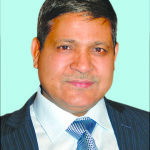

MAHIPAL SINGH RAGHAV, Chairman, MMR Group
UP Govt approves Botanical Garden-Kalindi Kunj Metro project
Proposed 3.9-km Botanical Garden (Noida)-Kalindi Kunj (Delhi) Metro corridor ,approved by the Noida Authority initially, was cleared by chief minister Akhilesh Yadav a cabinet meeting held in Lucknow recently.
The CM gave the Noida Authority chairman and CEO, Rama Raman, a go ahead to sign an MoU with the Delhi Metro Rail Corporation for the project, part of the Metro phase Ill plan.
The route will have three stations, Botanical Garden and Okhla Bird Sanctuary in Noida, and Kalindi Kunj in Delhi.
The proposal, pending with the state government, will now be put on fast track, Raman told media recently. ‘We have already completed all formalities for the MoU to be signed with DMRC. An amended draft MoU was forwarded to the state government for approval this May,• he said. ‘We will soon fix a meeting with DMRC. Work will start once we pay them,” he added.
The Rs845-crore corridor is expected to be complete The Rs 845-crore corridor is expected to be complete by March 2016, with the cost of the Metro line over the Yamuna bridge to be shared on an 80-20 basis between the UP government and the Centre.
The DMRC had last week invited bids for the project. ‘We have already paid DMRC around Rs 41 crore. Officials will now carry out a detailed survey for the project,” said a senior Noida official. ‘We have also earmarked 55,000 sqm land to DMRC for a casting yard in Sector 71 ,”he added.
Even the neighbouring district of Thane and the satellite city of Navi Mumbai will see a positive impact as the state chief minister Prithviraj Chavan has ordered a feasibility report on connecting Thane by Metro. The Wadala Metro will reach up to the farthest point of Ghodbander Road in Thane.
Property consultant Jones Lang LaSalle (JLL) is upbeat about the Metro having a positive impact on the real estate in the commercial capital. “Transportation infrastructure economics have historically proven to positively impact on real estate value in cities like Mumbai because residential and commercial properties located close to transportation infrastructure tend to command a premium,” said Ramesh Nair, COO, JLL India. Areas which would benefit from the Metro connectivity have already seen a price appreciation of 400 per cent over the past eight years. “And this trend is set to continue with the Metro railway link”, he said
Nair said that the execution of a string of surface transport infrastructure projects in the metropolis, including the Jogeshwari-Vikhroli Link Road, the Santacruz-Chembur Link Road (SCLR), Wadala Chembur Monorail and now the Versova-Andheri Ghatkopar corridor would further stoke the already feverish realty market in Mumbai.
• The eastern suburbs in Mumbai like Ghatkopar, Vikhroli, kurla, are going to see the maximum impact from the Metro. The commercial and residential market in the hitherto neglected areas like Andheri East, Saki Naka and Chakala will also stand to gain a lot
• Areas which would benefit from the Metro connectivity have already seen a price appreciation of 400% over the past eight years.


ASHIM BHANJA CHOWDHURY, Senior Manager, Research & Analysis, BOP


VIJAY JINDAL, CMD, SVP Group
Need to be pro-active in urban reforms, planning & management: Naidu
Union urban development minister M Venkaiah Naidu said that with the country turning ‘urban’ soon after 2040, urban management is both a challenge and opportunity and states should be proactive with necessary urban reforms, planning and management to meet the emerging challenge.
Expressing concern over poor quality and inadequate infrastructure in urban areas, the minister said that the poor and ‘aspirational india’ are the worst affected by lack of public transport.
“The metro rail service combines with other modes of efficient public transport are the best way of ensuring ‘quick and comfortable’ transport besides reducing consumption of scarce fossil fuels like diesel, petrol and gas. There should be institutionalised ‘people’s participation’ in management of urban affairs including sanitation and solid waste management. We need to improve urban planning and management and exploit growth potential of urbanisation in the country,” the minister said, while addressing media at the inaugural event of the new metro service at Mandi House station recently.
Naidu inaugurated the new 3.23-km Metro service at Mandi House station linking it with Central Secretariat Station. This line is aimed at decongesting the Rajiv Chowk station besides providing direct interchange facility at Mandi House on Noida Vaishali and Badarpur Line.
“The completely underground line has been completed ahead of schedule and within the stipulated cost and will benefit an additional 70,000 commuters every day. This section is the first to be launched under Phase Ill of Delhi Metro on completion of which in 2016,” Naidu said, adding that the national capital would be acquiring adequate metro services within and with the adjoining cities.
Naidu further said that the country’s urban population has increased from 62 million in 1951 to 377 million in 2011 marking an increase from 17 per cent of the total population to 31 per cent respectively.
“About 500 millions more will be living in towns and cities between 2040 and 2050 by when with 875 million urban population, the country would be predominantly ‘urban’ with rural population of only 815 millions.”
The minister noted that India lags in urbanisation which is at the moment 50 per cent in China and Indonesia, 61 per cent in South Africa and 87 per cent in Brazil while the average urbanisation for Asia is 45 per cent.
Asserting direct relationship between urbanisation, economic growth and development, Naidu said, contribution from towns and cities to gross domestic product (GDP) has increased from 29 per cent in 1950-51 to 47 per cent in 1987 and 63 per cent in 2007.
“This is expected to rise to 75 per cent in 2021,” he added, informing that number of cities and towns increased from 5,161 to 7,936 in 2011
-



 Interviews4 weeks ago
Interviews4 weeks agoHigh Rental Yield, Price Appreciation, Stable Growth, Make Sydney an Ideal Realty Investment Option: Haansal Estate
-



 News3 weeks ago
News3 weeks agoManasum Senior Living Launches IKIGAI GOA, A Senior Living Community in North Goa, in collaboration with Prescon Homes
-



 News2 weeks ago
News2 weeks agoKW Delhi 6 Mall Onboards New Brands
-



 News3 weeks ago
News3 weeks agoBridging India Divide: Top 5 Tier- 2 Cities to Focus On
-



 News1 week ago
News1 week agoGodrej Properties Sells Rs 3k cr+ Homes of Godrej Zenith, Gurugram, within 3 days
-



 News2 weeks ago
News2 weeks agoCommercial Realty Gets Tech Savvy: Fast Construction, Enhanced Convenience
-



 News3 weeks ago
News3 weeks agoMultipoint Connection – A Definite Boon
-





 News2 weeks ago
News2 weeks agoRBI’s Status Quo on Key Policy Rates to Help Maintain the Real Estate Growth Momentum, Say Industry Stalwarts









